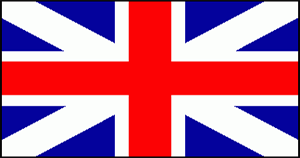War of 1812 Battles |
Colonial Wars |
American Wars |
USS Julia and USS Prowler captured
August 10, 1813
 |
|||||||||||||||||||||
|
On August 7th 1813 the much anticipated naval battle on Lake Ontario failed to materialize. However on that night in a heavy squall 2 American schooners the USS Hamilton and the USS Scourge did capsize. The sinking of these 2 vessels did not seriously hamper the American fleet, apart from the sad fact, that more than 80 lives were lost.
Commodore Sir James Yeo still would not maneuver in close to Commodore Isaac Chauncey and the American fleet, he was hoping for a chance to cut off the American schooners. On August 9, Yeo took time to report to Sir George Prevost, he complained that the American commander would not engaged his fleet unless he had a clear advantage.
The Americans were making similar assessments, Commodore Arthur Sinclair went onto describe the British squadron as "six regular built vessels of war, all sailing alike and able to suppport each other in any weather - capable of keeping the sea and acting efficiently".
This game continued August 8-9, until the evening of August 10. The opportunity the Americans had been waiting for had finally arrived. The British ships came to a standstill 6 miles of Twelve Mile Creek, the Americans were only 20 miles to the northeast. This was the chance to attack that they had been waiting for.
The American squadron was ordered into 2 columns. One column led by the USS Julia leading the USS Growler, USS Asp, USS Pert, USS Ontario, and USS Fair American. It was this line that was closest to the British squadron. The second column had the USS Pike leading the USS Onieda, USS Madison, USS Governor Tompkins, and the USS Conquest.
The Americans were only 4 miles away from the British when the wind shifted giving the British the handling advantage. The British ship, HMS Wolfe, moved toward the American ships Ontario and Fair American, who turned their long guns and aimed them at the Wolfe. The Americans opened fire at about 11:00 P.M., and it was 11:30 P.M. before the Wolfe returned fire. A short while later, Chauncey signalled to the schooners to make a prearranged move, the Pert along with the Asp, Ontario, and Fair American moved away, luring Yeo into Chauncey's trap, but the Julia, commanded by James Trant, and the Growler, commanded by Lt. David Deacon, stayed on their heading.
The American schooners ran so close to shore they could see the lights from the buildings. Believing their gunboats could evade the British squadron, they made a mad dash for open water. The British quickly moved towards them with their guns and cannonades blasting, and the Americans returned the fire. Moments later, the British were boarding the American schooners and taking her crews prisoner.
On Tuesday, August 11, the American prisoners began their long march to imprisonment at Quebec City and Halifax.
The loss of 4 schooners was, however, no great matter as they were only makeshift war vessels anyway. The Americans still had superiority over the British squadron on the Lake Ontario.
The British had anchored near York and, for the next couple of days, made repairs to the Growler, renamed the HMS Hamilton, and the Julia renamed the HMS Confiance. They also repaired one of the Wolfe's topmast's. The HMS Royal George had a leak repaired and the same repair was made to the HMS Melville.
With the 2 captured schooners, the total number of ships in the British squadron was now 8.
